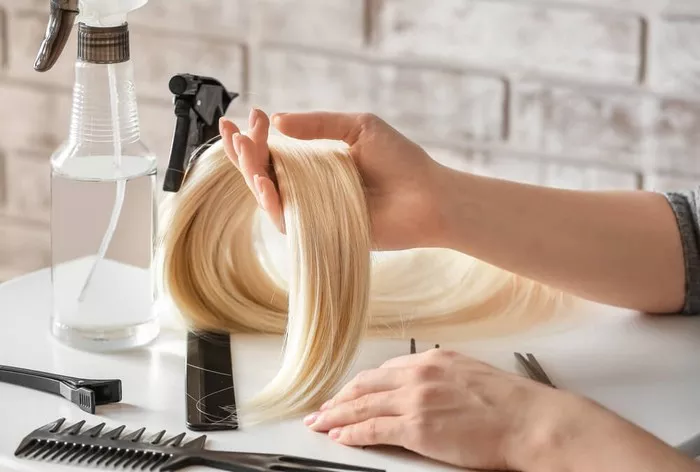Hair is often subjected to various environmental factors and styling products that can affect its health and appearance. When discussing hair dryness, it’s essential to understand what constitutes “80% dry hair.” This article will explore the characteristics of hair that is 80% dry, its causes, and effective care methods to maintain healthy hair.
What Does 80% Dry Hair Mean?
When we refer to hair being 80% dry, it indicates that the hair has lost most of its moisture but retains a slight amount. This level of dryness can significantly impact the hair’s texture, manageability, and overall appearance.
Characteristics of 80% Dry Hair
Texture:
Hair may feel rough or coarse to the touch.
It lacks the natural shine and smoothness of well-moisturized hair.
Appearance:
The hair can appear dull and lifeless.
There may be visible frizz and flyaways, especially in humid conditions.
Manageability:
Styling becomes challenging as the hair may not hold styles as well.
It may tangle easily due to its lack of moisture.
Elasticity:
Hair loses its elasticity, making it prone to breakage.
Stretching the hair may reveal brittleness.
Split Ends:
Increased occurrence of split ends due to lack of moisture.
Ends may appear frayed or uneven.
Causes of 80% Dry Hair
Understanding what leads to hair being 80% dry is crucial for prevention and treatment. Several factors contribute to hair dryness, including:
Environmental Factors:
Sun Exposure: UV rays can damage the hair cuticle, leading to moisture loss.
Wind: Harsh winds can strip moisture from the hair.
Heat Styling:
Frequent use of heat styling tools like flat irons, curling wands, and blow dryers can dehydrate the hair.
Chemical Treatments:
Treatments such as coloring, perming, or relaxing can weaken the hair and reduce its moisture content.
Hard Water:
Water with high mineral content can leave deposits on the hair, making it dry and brittle.
Inadequate Hydration:
Failing to drink enough water can impact overall hair health, contributing to dryness.
Improper Hair Care Products:
Using shampoos and conditioners that contain sulfates or alcohol can further strip moisture from the hair.
Effects of 80% Dry Hair
The consequences of having 80% dry hair go beyond aesthetics. Here are some effects:
1. Increased Breakage
Dry hair is more susceptible to breakage. This is primarily due to the lack of moisture, which diminishes the hair’s elasticity. As a result, hair strands may snap off, leading to thinner and less healthy-looking hair.
2. Slow Growth
When hair is excessively dry and damaged, it can hinder the growth process. Healthy hair typically grows about half an inch per month, but dryness can slow this process due to breakage and fragility.
3. Scalp Issues
Dry hair can also contribute to scalp problems such as dandruff and itchiness. A dry scalp may lead to flaking and discomfort, affecting overall hair health.
How to Identify 80% Dry Hair
Identifying 80% dry hair is essential for taking appropriate action. Here are some simple tests and signs to look out for:
1. The Squeeze Test
Gently squeeze a strand of hair. If it feels stiff and lacks flexibility, it may indicate dryness. Healthy hair should have some bounce and resilience when squeezed.
2. The Shine Test
Observe the shine of your hair. If it appears dull and lacks luster, it may be a sign of dryness. Healthy hair reflects light well, while dry hair absorbs it.
3. Frizz Check
If your hair is prone to frizz, especially after washing, it may be a sign that it’s losing moisture. Frizz often indicates that the hair cuticle is raised, allowing moisture to escape.
How to Care for 80% Dry Hair
To combat the issues associated with 80% dry hair, adopting an effective hair care routine is essential. Here are some strategies to restore moisture and health to dry hair.
1. Choose the Right Products
Sulfate-Free Shampoos: Look for shampoos that are free from sulfates, as they can strip natural oils from the hair.
Moisturizing Conditioners: Use rich, hydrating conditioners that contain ingredients like aloe vera, shea butter, or coconut oil.
2. Deep Conditioning Treatments
Weekly Masks: Incorporate deep conditioning masks into your routine at least once a week. These treatments can provide an extra boost of moisture.
Overnight Treatments: Consider using overnight masks or oils to nourish your hair while you sleep.
3. Limit Heat Styling
Reduce Frequency: Minimize the use of heat styling tools. When necessary, use a heat protectant spray to shield your hair from damage.
Air Drying: Allow your hair to air dry whenever possible to reduce heat exposure.
4. Hydrate Internally
Drink Water: Staying hydrated is crucial for overall hair health. Aim to drink at least eight glasses of water a day.
Balanced Diet: Include foods rich in omega-3 fatty acids, vitamins, and minerals that support hair health.
5. Regular Trims
Trim Split Ends: Schedule regular trims every six to eight weeks to remove split ends and prevent further breakage.
6. Protect from Environmental Factors
Wear a Hat: When outdoors, wear a hat to shield your hair from harmful UV rays and wind.
Use a Scarf: In dry or cold weather, consider wrapping your hair in a silk or satin scarf to maintain moisture.
Conclusion
Understanding what 80% dry hair looks like is crucial for effective hair care. With its rough texture, lack of shine, and increased breakage, 80% dry hair can be challenging to manage. However, by recognizing the causes and implementing a comprehensive care routine, it’s possible to restore moisture and health to your hair.
Related topics:
- Signs of Unhealthy Hair: Recognizing the Red Flags
- What Does Moisturizer Do for Hair? Unlocking Hydration
- What to Apply Before Using a Hair Straightener at Home


